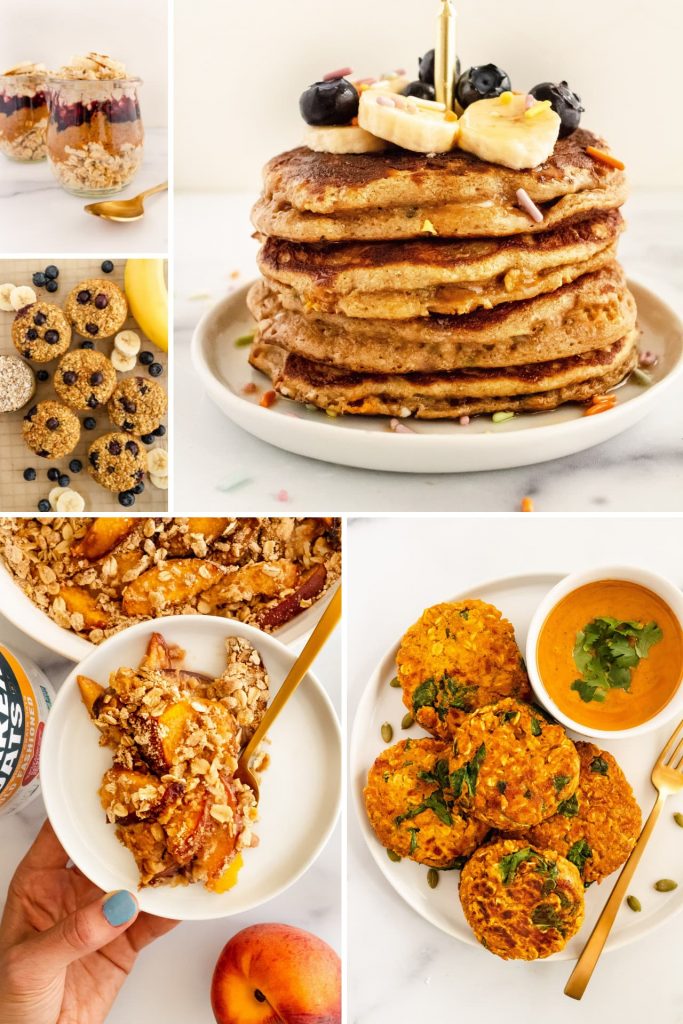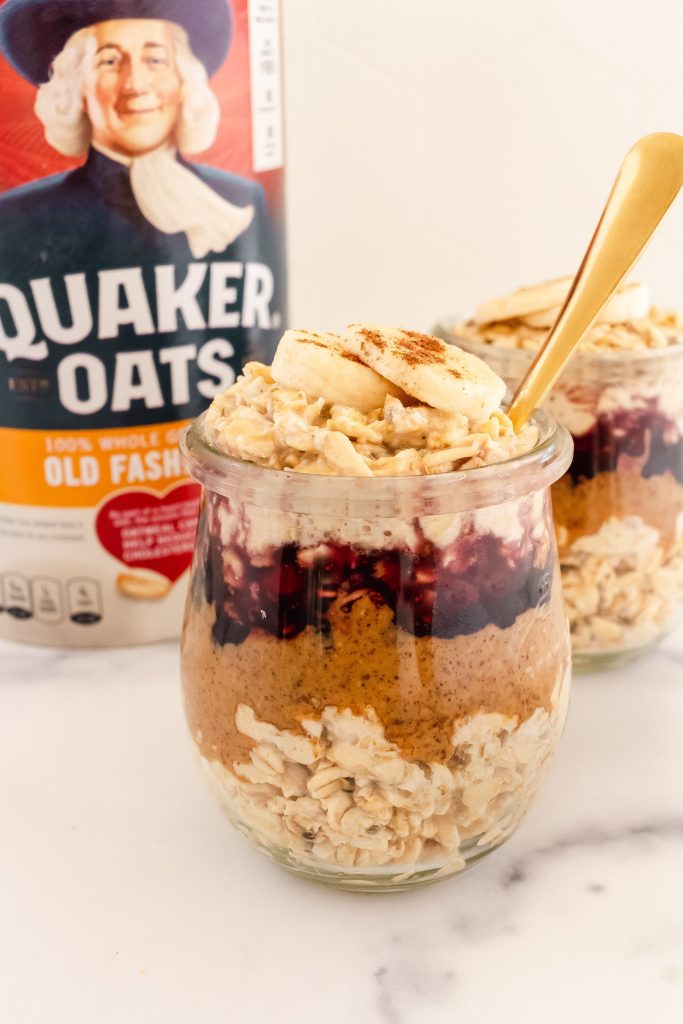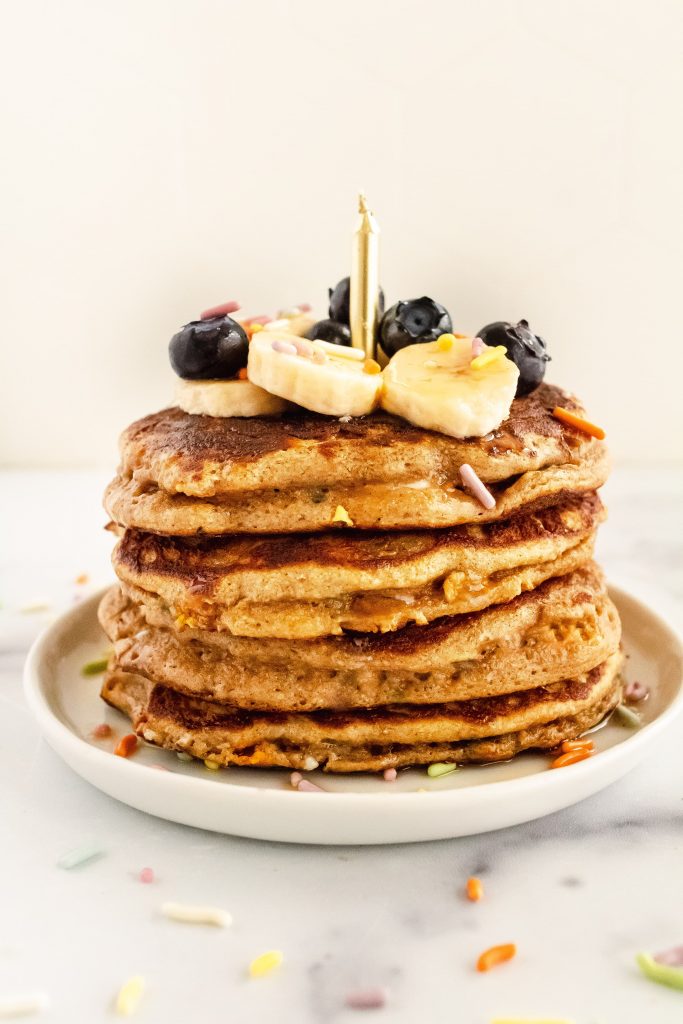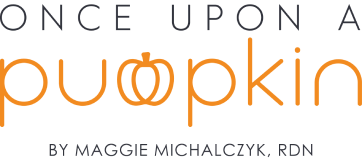
Chances are you’ve heard it’s important to incorporate more whole grains into your diet, but what exactly is a whole grain?! What makes them different? Explore this post to learn more about the benefits of whole grains, learn what foods contain whole grains, what makes them nutritious and how to incorporate more into your diet.
This post was created in partnership with The Quaker Oats Company. As always, all opinions are my own and I appreciate your support!
What makes whole grains different from refined grains is the fact that whole grains contain all three parts of the grain — the germ, the endosperm and the bran. We want all of these to be present in order to get the nutrients of each grain.
Examples of whole grains:
- Whole or rolled oats (regular, quick, or instant)
- Brown or wild rice
- Whole wheat
- Whole grain corn
- Buckwheat
- Bulgur (cracked wheat)
- Quinoa
- Barely
Ways to add more whole grains into your diet
- Swap regular pasta for whole grain pasta
- Choose whole grain, high fiber cereals for breakfast, like oatmeal.
- Try substituting whole wheat or oat flour for up to half the flour in flour-based recipes.
- Instead of white bread, opt for whole grain bread
- Toast oats and grains as a crunchy topping for your salad or yogurt.
- Add quinoa or wild rice in your favorite soups and grain bowl recipes.
Today I want to spotlight oats as a whole grain you can easily incorporate into your diet in a variety of ways. I always have a canister of Quaker oats in my pantry because the possibilities of what you can do with oats are truly incredible! From breakfast time to dinnertime, oats are highly versatile, offering countless possibilities to get more taste and nutrition out of what we eat each day.
You can feel good knowing the oats used in each variety of Quaker Oats – Instant, Quick, Old Fashioned and Steel Cut – are 100% whole grain, and ounce per ounce, they all provide similar amounts of fiber, vitamins and minerals.

UNIQUE WAYS TO USE OATS
- Start your morning with oats. Oats have a unique nutrition profile with a balance of both insoluble and soluble fiber (2 grams soluble fiber per ½ cup serving). They also are a good source of the essential vitamins and minerals our bodies need, including vitamin B1, magnesium and phosphorus., According to the new Dietary Guidelines for Americans, more than 90 percent of women and 97 percent of men do not meet recommended intakes for dietary fiber, so opting for oatmeal, overnight oats, or baked oatmeal for breakfast time is a great way to start your morning.
- Bake with oats. Oats add an incredible texture to a variety of baked goods. Grab that canister of Quaker Oats and add them to cookies, bars, breads, muffins and more for nutrition and texture.
- Make oat flour. Baked goods with oat flour are super popular these days and for a good reason. Oat flour adds an amazing texture to everything from pancakes to muffins and everything in between. You can make your own oat flour at home by pulsing Quaker Old Fashioned Oats in a blender or food processor until it’s a fine flour.
- Explore the savory side of oats. Oats are highly versatile and can add great taste, texture and nutrition to savory dishes as well as sweet. A ½ cup serving of rolled oats is a good source of fiber and may help support a healthy digestive system. Experts recommend we get 25-34 grams of fiber per day, and unfortunately most of us are not getting enough. A diet rich in whole grains like oats, fruits and vegetables can help us meet our fiber goals for the day.
Check out some of my favorite oat recipes here! Each of these recipes is made simple with the goodness of oats!

Breakfast Recipes with Oats
- Birthday cake oatmeal pancakes
- Gluten free blueberry banana oat muffins
- Almond butter and jelly overnight oats

